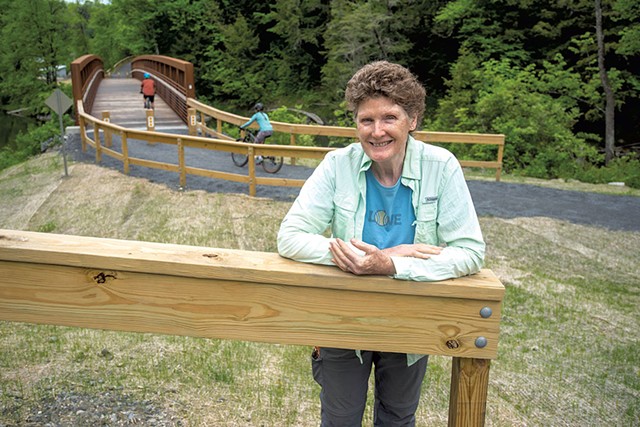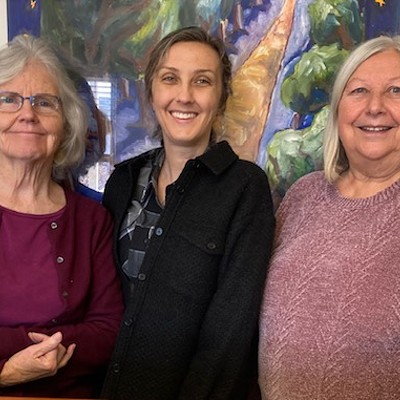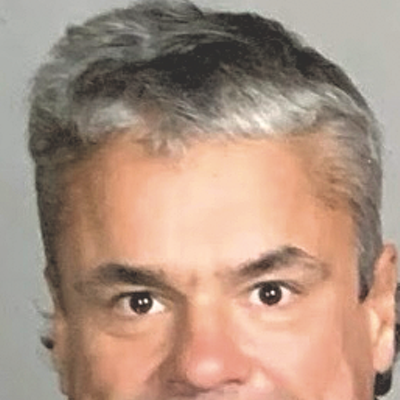
- Jeb Wallace-Brodeur
- Rose Paul
We were rolling on a lovely spring day, riding our bikes eastward on Stone Cutter's Way from downtown Montpelier. Railroad tracks were to our left as we continued past the Central Vermont Memorial Civic Center, then bore right on an old railbed that leads to the hydroelectric dam. The Winooski River rushed downstream away from us as we pushed uphill. We spotted a Bobcat — the machine kind, that is — scooting to and fro, filling low spots.
A last scramble up a rutted incline delivered us to a most excellent sight for sore thighs: the 200-foot-long steel-and-wood edifice of the new bridge over the river, a $2 million diamond in the necklace of linked byways forging the Cross Vermont Trail.
Is this what Rose Paul envisioned in the fall of 1990 when she moved to Plainfield Village? Schooled in botany and environmental studies, she discovered an old railbed running through town being freely used for biking and walking despite its private ownership. Paul followed the trail for many miles east into the Groton State Forest, and her own wheels started turning: What if?
"I just thought it could be very exciting to work on formalizing this as a trail," recalled Paul, who has just recently eased off full-time duties after a long stint with the Nature Conservancy. "I knew that we would have to work with many private landowners," she went on. "I also thought, If you're gonna go big, go really big, because that's the way to get attention and funding."
Big, she went. On Saturday, June 4, Montpelier Mayor Anne Watson; state Forests, Parks and Recreation Commissioner Michael Snyder; and assorted other pooh-bahs will gather to dedicate the bridge, a potent symbol of Paul's big idea of a multiuse trail stretching from Lake Champlain to the Connecticut River. Imagine a linear jigsaw puzzle, much assembly required. But the route makes it accessible to thousands of Vermonters.
"A beauty of the Cross Vermont Trail is that we go through a lot of villages, past schools and state parks," Paul noted. "So it goes through places that people live, and they can get on the trail and get out into nature."

- Jeb Wallace-Brodeur
- Greg Western smoothing out fresh trailbed material
Greg Western will be cutting the ceremonial ribbon at the bridge. Rose Paul supplied the idea; Western executed it. A biblically bearded veteran of trail management, Western began working on the Cross Vermont Trail in 2006. In 2013, he was named executive director of the Cross Vermont Trail Association, the organization charged with overseeing the many moving parts of the project.
"Ultimately, the work of the Cross Vermont Trail Association is to promote and help improve local trails and figure out how to connect them together to form larger networks with the dream of forming a complete off-road route from Lake Champlain to the Connecticut River," Western explained. "Much of the old railroad is private and not a trail at this time, and some of it is physically gone for various reasons," he went on. "But by working with landowners incrementally over time, our goal is to re-create a trail on the railbed in some places and in other places build new trail that approximates the old railbed."
The Cross Vermont Trail — advocates call it a "community-building project" — is coming together through donations of private land and disused railbeds, federal grants to the state, and purchases. In late March, Gov. Phil Scott awarded several million dollars to trail projects in Groton, Cabot and the City of Montpelier. The grants were made by the Vermont Outdoor Recreation Economic Collaborative, a consortium of businesses and nonprofits promoting outdoor recreation.
Progress thus far is due to Paul's determination not to let her vision fade.

- Jeb Wallace-Brodeur
- Cyclists on the Cross Vermont Trail bridge in Montpelier
"In 1992," she told Seven Days, "I was working as a natural resources planner at the Vermont Agency of Natural Resources. I started talking about it with people there, and I actually got permission to spend a little work time on it. And, really, that's where the initial capacity came from."
By 1996, "we had gained a little momentum and followers, but we weren't anything official," Paul added. Some lobbying and friends in the Statehouse produced funding to hire a part-time coordinator, who was housed at the Vermont Agency of Transportation. On May 21, 1996, the Cross Vermont Trail was designated by governor Howard Dean as a part of the Vermont Trails System. The CVTA was registered as a private nonprofit corporation in 1999.
Because the statewide route is a patchwork of many different pieces, Western explained, the CVTA works with a wide variety of partners — including private landowners who choose to allow a trail on their land, as well as many local towns, and state and federal agencies.
As outlined on the CVTA website, the 90-mile multiuse trail runs from Oakledge Park in Burlington and "generally parallels the Winooski River through Waterbury and Montpelier to the town of Marshfield, where it crosses out of the Winooski watershed in Groton State Forest." In the forest, the trail meets the headwaters of the Wells River and continues along the river "through the villages of Groton, South Ryegate, and Wells River to the east end at the Connecticut River."
Another way to visualize the route, Western said, is to trace a line on a Vermont highway map that generally parallels Routes 2, 232 and 302.
Paul saw a possibility and wanted to go big — but big takes time.
"Maybe we've been lucky in that the pace of development isn't fast here in central and eastern Vermont," she said. "Things change slowly. So, we've been very fortunate that most of the railbed has not been taken up as private driveway."
Back on the trail, we marveled at the bridge for some time, admiring how neatly it fit into the landscape. The route beyond was marked but unfinished. Still, the promise of the Cross Vermont Trail was tangible, a 30-year dream much closer to reality.









Comments
Comments are closed.
From 2014-2020, Seven Days allowed readers to comment on all stories posted on our website. While we've appreciated the suggestions and insights, right now Seven Days is prioritizing our core mission — producing high-quality, responsible local journalism — over moderating online debates between readers.
To criticize, correct or praise our reporting, please send us a letter to the editor or send us a tip. We’ll check it out and report the results.
Online comments may return when we have better tech tools for managing them. Thanks for reading.